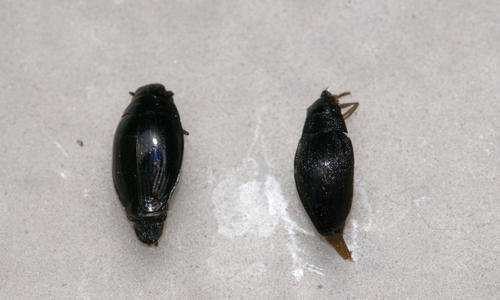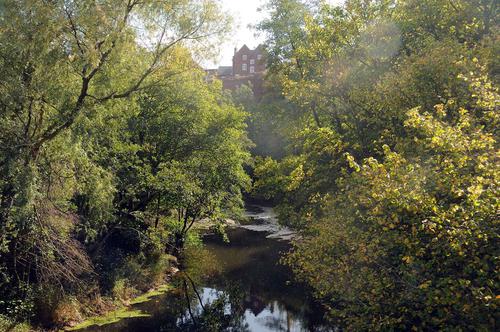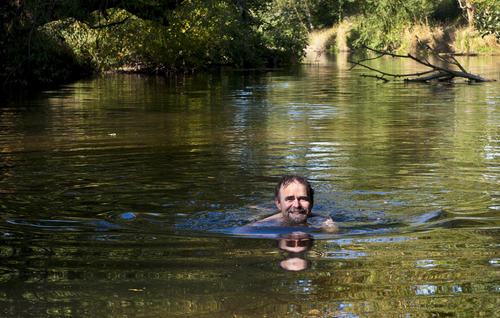Water Beetles in the Rivers Severn and Teme 2011
Will Watson
At the Cherry Orchard recorders day on 2nd July I teamed up with Mike Averill and looked for water beetles, Odonata and other aquatic life in River Severn. Whilst the main focus of the day was to look at the ruderal grass and tall herb communities on Cherry Orchard we were determined to look at the river which has only rarely had any surveys conducted to species level. Perhaps this is because the challenging nature of the river; the banks are very steep and there is a narrow 2m margin of soft silt before it drops off vertically for 3m or so where the main channel is located. So I was amazed to be able to collect seven species of river ‘specialist’ water beetles from the left bank at Cherry Orchard and an additional species from the right bank at Diglis Weir. Included amongst this haul was the National Scarce list B whirligig ‘The Artist’ Gyrinus urinator and the Hairy Whirligig Orchectochilus villosus (Fig. 1.). Also found were the riffle beetle Oulimnus tuberculatus, the attractive medium size river diving beetle Platambus maculatus, two other specialist diving beetles of flowing water Stictotarus duodecimpustulatus and Nebrioporus elgans and the very small diving beetle Haliplus lineatocollis typically found in flowing water and lakes.
So successful was the exercise that Harry Green organised another excursion to the River Severn on 11th August mainly to look mollusc fauna. Water levels then were very low; I have heard that river levels were as low as they were in 1976. May be not good for fish and some of the river life but this allowed us to gain safe access to Diglis Weir spillway and salmon run; under normal conditions it would be covered by water and slippery algae and moss. On the vertical sides of the salmon run there was a mass of Fontinalis moss. This revealed two specialist but common riffle beetles Elmis aenea and Limnius volckmari bring the total of beetles found in the Severn at that locality to nine.
Mike and I then decided to visit the River Teme opting for a section rarely visited by biological recorders bordering Frank Matthews Nursery at Lower Berrington, Tenbury Wells (Fig. 2.); about as far as you get from Worcester but still in the county!? Six water beetles were recorded; Stictotarus duodecimpustulatus, Nebrioporus elgans, Haliplus lineatocollis, Platambus maculates and Ilybius fulginosus & Hygrotus inaequalis. The latter diving beetles are of interest because they are found in ponds and slow flowing rivers and were almost certainly more prevalent because of the low water.
On 14th September I sampled the Teme at Little Herefordshire and only two miles upstream from Lower Berrington, which as its name suggests is in the next county, and found the Nationally Scarce A water beetle Pomatinus substriatus as well as young brook lamprey. Surely both species occur downstream in Worcestershire.
These surveys indicate that the biological conditions of the two rivers are fairly good but I feel a little bit more recording and dare I say river monitoring is necessary before any firm conclusion and comparison with past data can be made.
[The River Teme waters appear not to have harmed the aquatic will Watson – see Fig. 3. Ed.]
Image
Fig. 1. The Artist Gyrinus urinator, left and the Hairy Whirligig Orchectochilus villosus, right. ©Will Watson.
Fig. 3. Will Watson swimming in Teme. ©Roger A Plant.
Fig. 2. Berrington Court overlooking the River Teme at Lower Berrington. ©Will Watson


